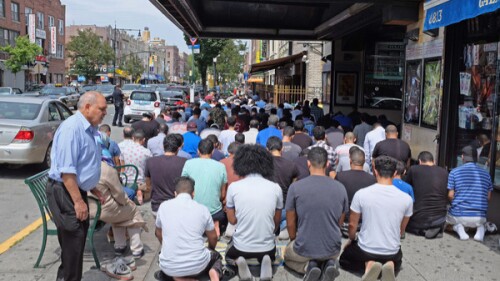As part of its bid to demonstrate solidarity with Muslims in Gaza and in keeping with its worldview about fighting infidels everywhere while continuing to prioritize the fight against ‘apostates,’ the Islamic State launched its ‘expedition’ entitled “And Kill Them Wherever You Find Them.” The first operation publicly claimed under this expedition was the Iran bombings, the official statement for which was published soon after the release of spokesman Abu Hudhayfa al-Ansari’s speech bearing the same title as that of the expedition. It is by far the most prominent operation so far within this expedition.
The expedition, for the most part, simply entails the Islamic State claiming more operations around the world than it usually does, reflecting either that the group deliberately underreports its own operations in certain areas (e.g. it is very likely that the group routinely underreports its operations undertaken against the Syrian government and its allies in the sparsely populated central regions known as the badiya) or that it is pressing its affiliates to make extra efforts on this occasion- efforts that may run out of steam after a short period of time. The targets mostly reflect the usual groups of those who bear the brunt of the group’s operations around the world: ‘apostates’ of various kinds (whether Shi’a, Alawite or those still claiming affiliation with Sunni Islam but deemed by the group to have ‘apostasized’) and Christians in Africa (whose homes are routinely raided and burned by Islamic State in various parts of the continent).
The targets mostly reflect the usual groups of those who bear the brunt of the group’s operations around the world: ‘apostates’ of various kinds and Christians in Africa.
The results of these operations so far, as presented in the group’s al-Naba’ weekly newsletter, are featured below with translation, with parenthetical insertions in square brackets my own. It is of note that the timespan for this expedition starts from 1 January whereas the speech was released on 4 January. This may indicate that the speech itself was recorded just around the turn of the New Year.
“And Kill Them Wherever You Find Them” from 19 to 28 Jumada al-Akhira [c. 1 January-10 January].
Distributed over the countries of Iran, the Philippines, al-Sham [Syria], Iraq, Pakistan, Afghanistan, Cameroon, Nigeria, Niger, Mali, Congo [Democratic Republic of Congo], Mozambique.
More than 610 killed and wounded:
- 140 disbelievers and apostates
- 387 Rafidites [Shi’a] and Nusayris [Alawites]
- 68 Crusaders
- 13 officers and commanders
More than 110 operations:
- 22 IEDs [improvised explosive devices]
- 70 attacks and clashes
- 6 assassinations
- 2 martyrdom operations [suicide bombings]
- 6 ambushes
- 6 other operations
- Destruction and damaging of 29 vehicles
- Destruction of 5 infrared cameras
- Burning of more than 300 homes
- 11 prisoners
The most prominent operations:
Wednesday 21 Jumada al-Akhira [3 January]:
Killing and wounding of more than 300 idolatrous Rafidites in a dual martyrdom operation in Iran.
Monday 26 Jumada al-Akhira [8 January]:
Killing and wounding of around 30 personnel of the apostate Pakistani police in a bombing by the soldiers of the Caliphate in the border locale of Bajaur.
Tuesday 20 Jumada al-Akhira [2 January]:
Killing and wounding of more than 35 of the Nusayri army, among them officers, in a bombing by the soldiers of the Caliphate east of the town of Sukhna in Homs.







